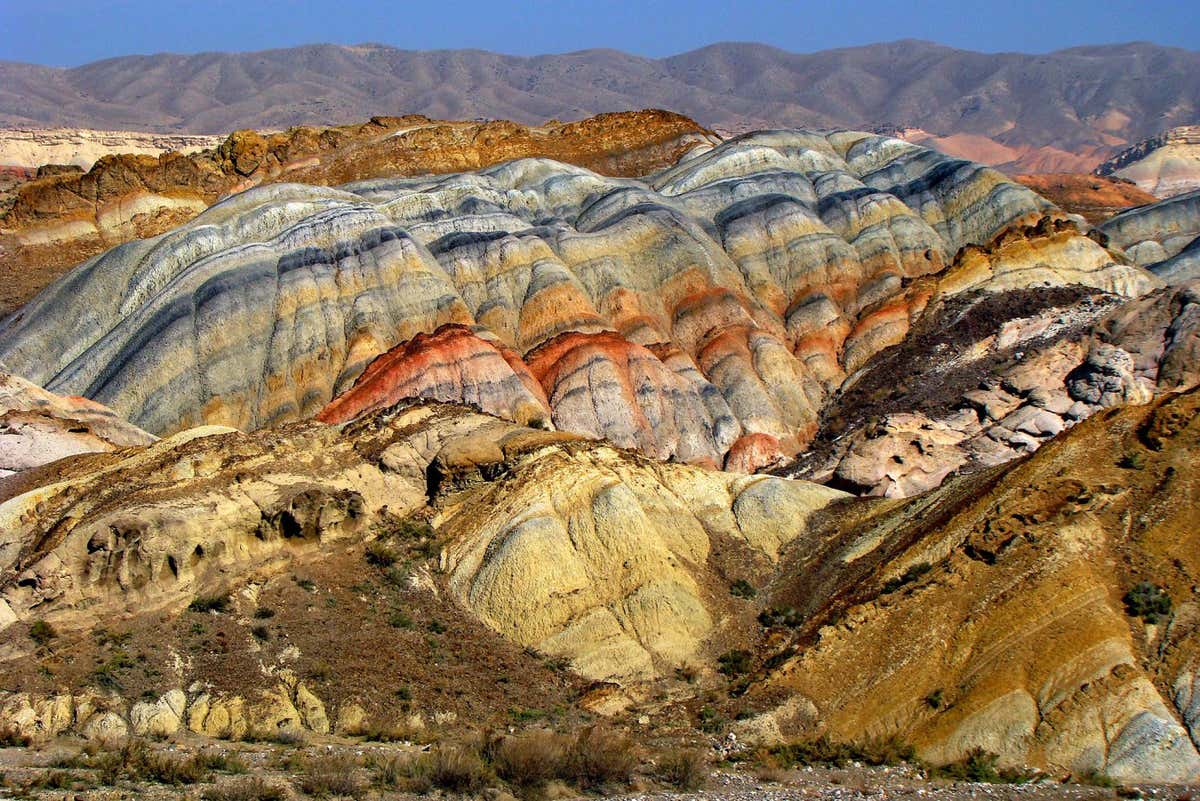
The Madygen formation is one of the world’s richest Triassic fossil beds – but few people have heard of it.
GeoExplorersClub
Around 235 million years ago, in what is now central Asia, a small reptile fell into a freshwater lake and settled in the soft mud at the bottom. The creature – named Longisquama, meaning “long scales”, after the strange, feather-like protrusions on its back – probably lived in a nearby forest with a host of other curious animals, including a flying reptile known as Sharovipteryx and Gigatitan, a giant mantis-like insect.
As the Longisquama‘s body slowly decayed and gradually turned to stone, continents drifted and the landscape above changed, with the lake drying up and reforming numerous times. Then, in the 1960s, Soviet palaeontologist Aleksandr Sharov found the fossilised reptile and shone a scientific spotlight on this little-known corner of the USSR.
Today, the region is in southern Kyrgyzstan, a dusty landscape of colourful rock outcrops and dry riverbeds framed by the snow-capped peaks of the Turkestan range. These rocks, remnants of the layers of mud and silt deposited on the lake bed on which Longisquama came to rest, are called the Madygen formation, after a nearby village. Palaeontologists recognise it as one of the world’s richest Triassic fossil beds and a lagerstätte – a site with exquisitely preserved specimens – but few other people have heard of Madygen.
That looks set to change. If all goes to plan, this year the region will become a Global Geopark, the first in…





